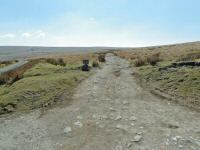 |
The track that leads from the car park to Nun's Cross.
|
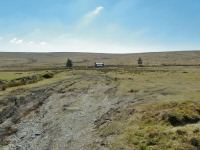 |
In the distance is the farmhouse of Nun's Cross which was built in 1901 and replaced a 19th century small farmhouse. It was inhabited as a working farm until the 1960's. The Navy then used the house for training purposes. Nowadays it tends to be used for corporate training.
|
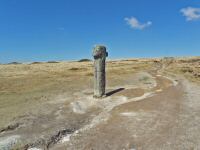 |
Nun's cross SX 604699. This cross has been around for centuries. In 1240 it was known as Siward's Cross. Siward may have been a Saxon earl who owned land around here before 1066.
|
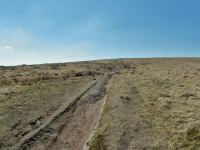 |
The track that leads away from Nun's Cross. Just 10 yards away lies the fork in the track.
|
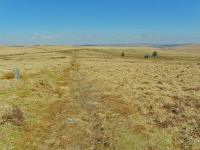 |
The path that leads from Nun's cross direct to Eylesbarrow cairns.
|
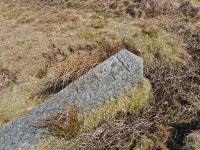 |
A fallen PCWW (Plymouth City Water works) marker post. These posts mark the SE limit of the Burrator gathering grounds. SX 601690.
|
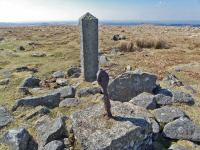 |
Another PCWW marker post and a heavily weathered iron spike. What this spike marks is unknown - it may be an earlier Burrator marker, Eylesbarrow tinworks or even Ditsworthy warren.
|
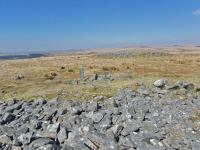 |
The two cairns of Eylesbarrow - SX 599686. These are Bronze Age funeral mounds. A large reave runs down from one the cairns towards Sheepstor.
|
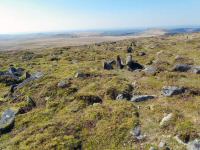 |
Some of the remains of the 19th century Eylesbarrow tin mine. This operated between 1814 and 1852 and became an extensive operation with many adits, shafts and 7 stamping mills. Power was brought by a leat from the river Plym and which curved around Hartor Hill. For a plan of the works click here.
|
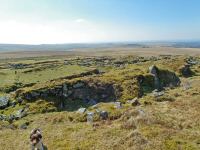 |
Some of the ruined buildings of the Eylesbarrow tin mine. |
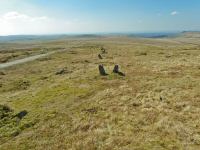 |
This line of flat rod supports were used to support the rods that conveyed power from the cranked waterwheel to the shaft and adit water pumps. SX 599682
|
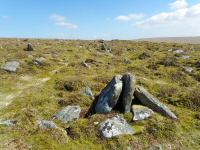 |
A closer look at some other flat rod supports. Simple but effective use of natural materials. Around 4000 ft of iron rods were sold off when the mine closed in the 1850's. |
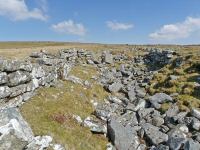 |
The original wheel pit of Eylesbarrow. This was powered by water from a leat taken from the upper Plym. The big wheel would have powered a number of shaft water pumps. |
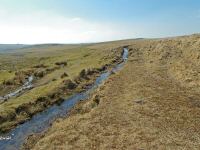 |
The leat that takes water from the upper Thrushelcombe to Ditsworthy Warren house.
|
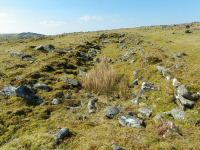 |
Remains of a medieval longhouse built within the older pound of Whittenknowles. This area can be overgrown in the summer. SX 586670
|
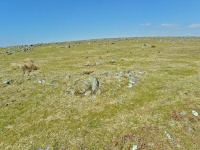 |
One of the 38 hut circles within the ancient pound of Whittenknowles. This was a big "housing estate" for the time. |
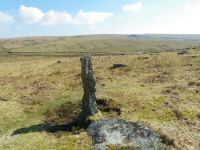 |
A border stone near to eastern Tor. On the hillside in the distance lie the field enclosures of Hentor warren with the distinctive cone of Hen Tor towards the right.
|
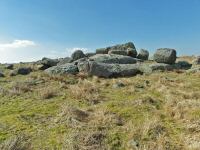 |
The rocks of Eastern Tor. - SX 584665. This tor is a dispersed one with a fair amount of loose rocks and clitter around.
|
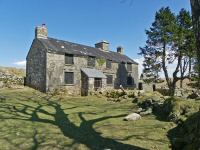 |
Ditsworthy Warren house (SX 584662). In the 19th century the 210 acres of the warren supported over 6000 rabbits. Business was good and it was not unknown for over 300 rabbits to be netted in one night. Before the Dartmoor train arrived in 1885 the rabbits would be taken by horse to Plymouth and Devonport. The warren remained active between the wars when the rabbits would be carried by rail to many different places. |
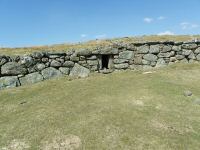 |
Part of the kennel court of Ditsworthy Warren with one of its dog kennels. The dogs were used to help flush out the rabbits before trapping them.
|
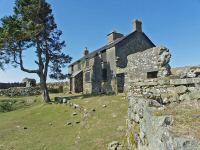 |
Ditsworthy Warren house is now used by the armed forces as centre for training activities on the moor. Troops can stay in the house or camp outside in the grounds
|
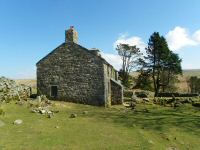 |
Ditsworthy Warren was used by Steven Speilberg as a set for part of his film War Horse. More info here.
|
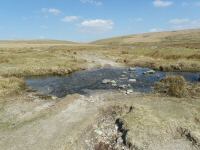 |
Thrushelcombe brook ford - SX 589665
|
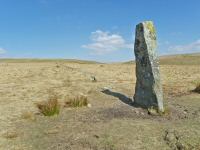 |
One of the stone rows at Drizzlecombe with a menhir at the end (SX 591669). There are 3 stone rows, 3 menhirs, 3 kystvaens and a number of cairns in this area.
|
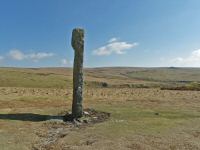 |
The other large stone at Drizzlecombe. This 14ft stone is the tallest menhir on Dartmoor. By the 19th century the stone had fallen down so it was reerected in 1893. The holes were made deeper to minimise the chances of it falling again. So originally it stood even taller.
|
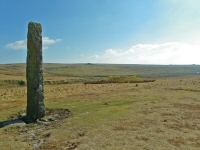 |
Another shot of this impressive menhir. Giant's Basin cairn is nearby. Hen Tor in the distance. |
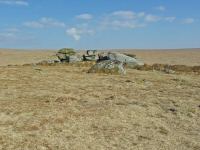 |
Lower Hartor - SX 603675. This attractive tor is surrounded by the fairly featureless upper Plym landscape |
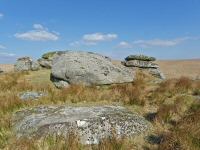 |
A closer look at Lower Hartor. |
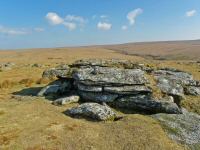 |
Higher Hartor - SX 600677
|
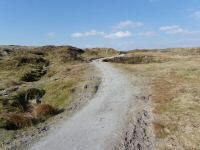 |
The path at Eylesbarrow curves around the remains of adits and shafts from the Victorian tinworks. |
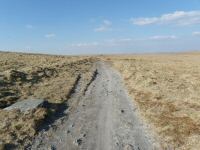 |
The well used path that leads back to Nun's Cross. SX 603690 |
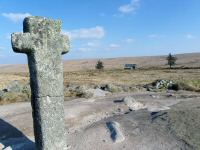 |
Nun's Cross with the farmhouse in the background. There is a cross carved in the space between the 2 arms and below is an inscription BOC LOND - probably meaning Buckland Abbey. |
